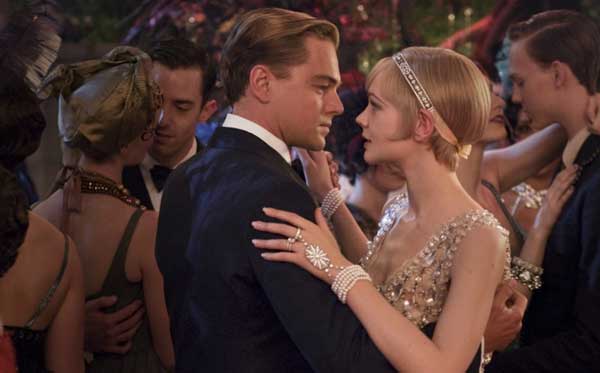
Film review: The Great Gatsby
Certificate: 12A
Often, when people discuss a film version of a well known novel, the phrase you’ll hear is: “It’s good, but not as good as the book.” Why is this? It’s because a book, when we immerse ourselves in it, captures our imaginations in a way that the literally visual cannot.
We use our creative capacities to picture the charcters, the scenes, in a way that is unique to each reader. Mark Haddon, author of The Curious Incident Of The Dog In The Night Time, is amazed by the way readers describe Christopher, his book’s central character, differenty. To some he’s tall and lanky, to others he’s short and fat, etc.
Baz Luhrmann took on a big task when he declared his intention to translate The Great Gatsby to film. It’s the fourth film adaptation since 1949. The book, first published in 1926, is a wonder of compressed storytelling. Telling the story of a rich and mysterious businessman who throws lavish parties in an attempt to recapture a lost flame, Fitzgerald’s book is less than 50,000 words. But the great themes of literature are all here: love, deception, loyalty, mortality and time are all embraced in the book’s pages. It’s beautifully written, and compresses a compelling narrative into scarcely 170 pages.
Lurhrmann’s version is full of colour and glamour. The print uses deliberately plush colours, and at times it feels like a comic book. Lurhmann likes to make a fast film. In The Great Gatsby, like his musical fantasy about bohemian Paris, Moulin Rouge, the director employs the same fast editing, sumptuous set pieces and shots that zoom across great distances in a few seconds.
This didn’t feel right for The Great Gatsby – the showy style threatens to overwhelm the book’s substance. Lurhmann loves a party scene (remember the wonderfully riotous moments in Moulin Rouge?), and the scenes of drunken parties at Gatsby’s manor are shot with energy and spark, but lack the cool melancholy of the book.
In fact, the whole timbre of the first half of the film felt oddly misjudged. Somehow the sorrow of Fitzgerald’s fable gets lost amid the noise and spectacle. Luhrmann uses modern music to accompany his beautiful 1920s sets and costumes; the moment where Gatsby and company pass a car full of gangstas enjoying rap music in an open top car was cringeworthy and silly. “I don’t know what to think,” says Toby MacGuire as Nick Carraway at that point. He has a point.
On the whole, the cast work well: Leonardo di Caprio isn’t bad as the troubled, self-mythologising Gatsby, and Joel Edgerton is brilliant as the bullying, self-centred Tom Buchanan. Carey Mulligan works well as the rather shallow Daisy, but Tobey Maguire is less convincing as the book’s narrator Nick Carraway. Maguire comes across naïve and gullible, instead of the the careful, precise observer who tells the story in the novel. If Maguire had to look goggle eyed at something once, he did it 25 times. His eyes on stalks shtick almost became a joke by the end of the film.
The film uses the two primary metaphors of Fitzgerald’s text: two eyes from an old advertisement watching over a desolate wasteland, and a green light that winks from Daisy and Tom’s house across the bay to Gatsby, an almost mystical symbol onto which Gatsby attaches his doomed hopes. But there’s something richer, deeper and more melancholic in the novel that the film fails to capture.
If Luhrmann had been persuaded to slow down and take a more steady, careful, character-driven approach, he might have pulled off something terrific, and something much more satisfying. Instead, the result is a sugary confection, and left me recalling what people often say of film adaptations: “It’s good, but not as good as the book.” Still, if you haven’t read the novel, you have a treat in store.
- Miles Salter is a writer, musician and storyteller based in York.Find out more about him at the Authors Abroad website
- You can follow him on Twitter @MilesWrites
- For York cinema times for The Great Gatsby and every other film go to our movie listings page
